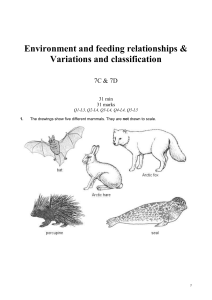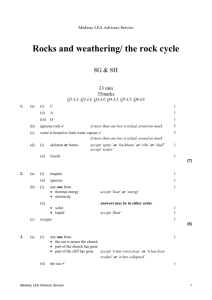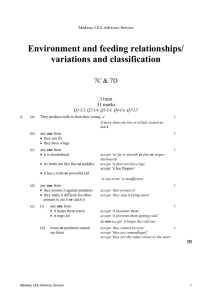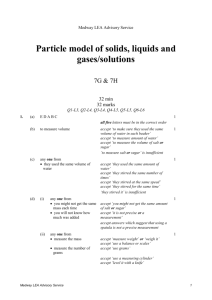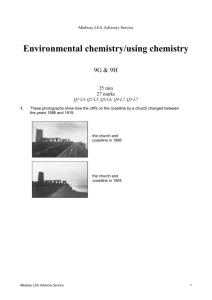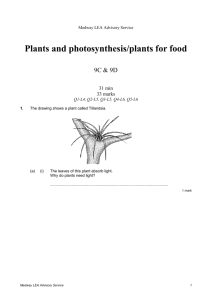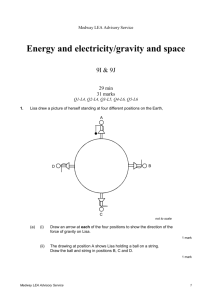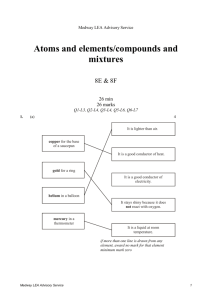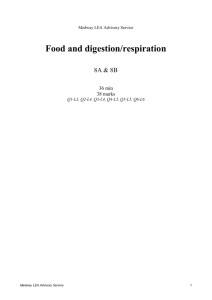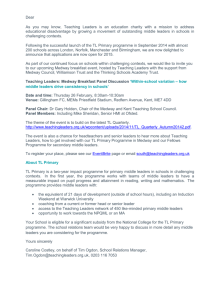Environment and feeding relationship/variations and classification
advertisement
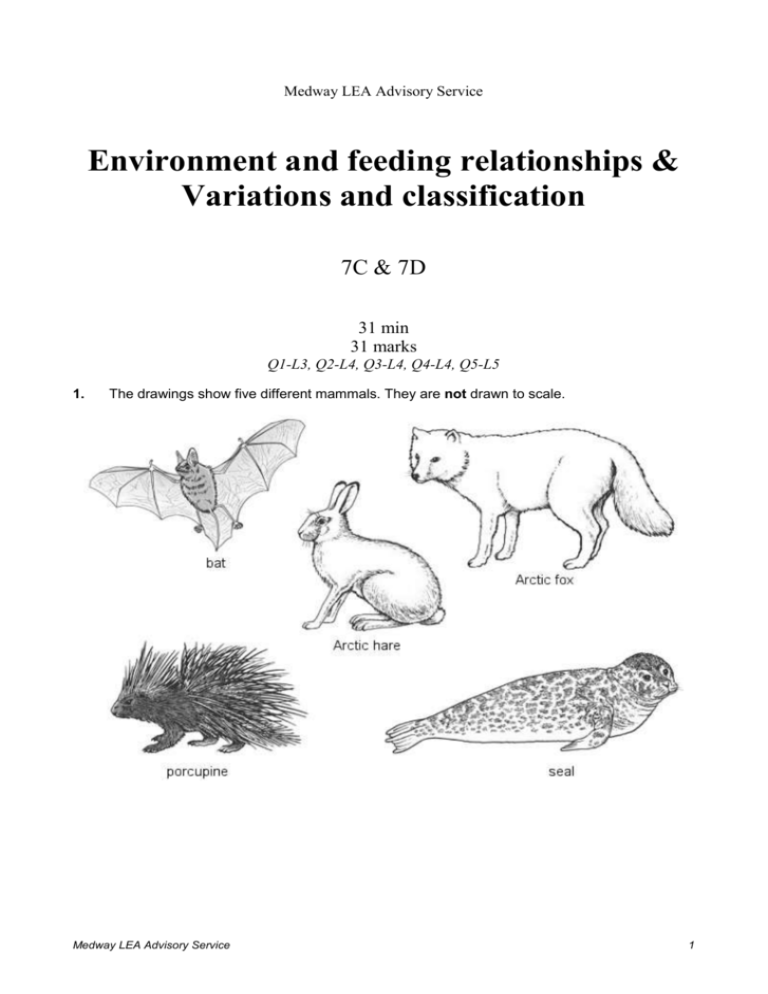
Medway LEA Advisory Service Environment and feeding relationships & Variations and classification 7C & 7D 31 min 31 marks Q1-L3, Q2-L4, Q3-L4, Q4-L4, Q5-L5 1. The drawings show five different mammals. They are not drawn to scale. Medway LEA Advisory Service 1 (a) Which fact is only true about mammals but not true about other animals? Tick the correct box. They can swim. They have four legs. They lay eggs. They produce milk to feed their young. 1 mark (b) Look at the drawing of the bat. In what way are bats unusual mammals? ..................................................................................................................... ..................................................................................................................... 1 mark (c) Give one way the seal is suited for moving through water. ..................................................................................................................... ..................................................................................................................... 1 mark (d) The porcupine has spines. How do the spines help a porcupine to survive? ..................................................................................................................... ..................................................................................................................... 1 mark (e) In winter, the fur of the Arctic hare and the Arctic fox becomes thicker and turns white. (i) How does thick fur help an Arctic hare and an Arctic fox to survive during the winter? ............................................................................................................. ............................................................................................................. 1 mark (ii) The Arctic fox hunts and eats Arctic hares. How does white fur help Arctic hares to survive in the snow? ............................................................................................................. ............................................................................................................. 1 mark maximum 6 marks Medway LEA Advisory Service 2 2. (a) The photograph below shows a team of dogs called huskies pulling a sledge across the ice. Huskies need to survive in a cold climate. They must be able to pull a heavy sledge for a long time each day. Which two features would a dog breeder look for when choosing huskies to breed from? Choose from the list of features below and give the reason for each choice. blue eyes thick fur 1. fierce nature short legs long tail strong muscles feature ......................................................................................................... 1 mark reason ......................................................................................................... ..................................................................................................................... 1 mark 2. feature ......................................................................................................... 1 mark reason ......................................................................................................... ..................................................................................................................... 1 mark (b) The drawings below show three dogs. They all look different. Medway LEA Advisory Service 3 (i) Which word describes the differences between these dogs? Tick the correct box. adaptation reproduction vaccination variation 1 mark (ii) The drawing below shows a puppy. Dog C is the puppy's mother. Why does the puppy look like his mother? Tick the correct box. Information passed from the mother in an egg. Information passed from the mother in a sperm. Information passed from the mother in milk. Information passed from the mother in blood. 1 mark Maximum 6 marks Medway LEA Advisory Service 4 3. The drawing shows a horseshoe bat. In an investigation, Val counted the number of insects a horseshoe bat ate. Her results are shown below. A 35 dung beetles B 10 cockchafers C 40 moths D 15 other insects not to scale (a) Val used the numbers of insects to draw a pie chart. Write the letter of each insect by the correct section of the pie chart. 3 marks Medway LEA Advisory Service 5 (b) Dung beetles eat dung (animal droppings). (i) Why are there lots of dung beetles in fields where cows are kept? ............................................................................................................. ............................................................................................................. 1 mark (ii) Why do horseshoe bats live close to fields where cows are kept? ............................................................................................................. ............................................................................................................. 1 mark (c) (i) Insecticides are used to kill insects. What will happen to the number of horseshoe bats if the insects are killed? ............................................................................................................. 1 mark (ii) Give one other reason why the number of horseshoe bats might change. ............................................................................................................. ............................................................................................................. 1 mark Maximum 7 marks 4. Each of the animals in the drawings below belongs to a different group. (a) On the line beneath each drawing, write the name of the group the animal belongs to. Choose names from the list below. amphibians crustaceans ......................................... A Medway LEA Advisory Service insects mammals molluscs reptiles ......................................... B 6 ......................................... C ......................................... D 4 marks (b) Which of the animals drawn above are invertebrates? Give the correct letters. ........................ and ........................ 2 marks Maximum 6 marks 5. The drawing shows some of the animals which live at the bottom of the North Sea. prawn starfish hunting for clams tube worms sediment containing the remains of plants clam feeding on plant remains in the sediment not to scale WWF - UK Data Support For Education Service (a) Suggest two advantages clams get from living in the sediment. 1. ……………………………………………………………………………………. ………………………………………………………………………………………. 2. ……………………………………………………………………………………. ……………………………………………………………………………………….. 2 marks Medway LEA Advisory Service 7 (b) Part of a food web in the North Sea is shown below. Herring, sandeels and cod are types of fish. Puffins are sea birds. cod puffins herring sandeels tiny 'animals' tiny 'plants' Herring lay eggs in the gravel on the seabed. Sandeels live where the seabed is covered with sand. Millions of cubic metres of gravel and sand are removed from the bottom of the North Sea every year for roads and buildings. (i) Give one way removing some of the sand and gravel might cause the numbers of herring and cod to decrease. herring ………………………………………………………………………. ……..…………………………………………………………………………. ..………………………………………………………………………………. 1 mark cod ..…………………………………………………………………………. ..………………………………………………………………………………. ..………………………………………………………………………………. 1 mark Medway LEA Advisory Service 8 (ii) Explain why removing some of the sand has led to a decrease in the number of puffins. ..………………………………………………………………………………. ..………………………………………………………………………………. ..………………………………………………………………………………. ..………………………………………………………………………………. 2 marks Maximum 6 marks Medway LEA Advisory Service 9
